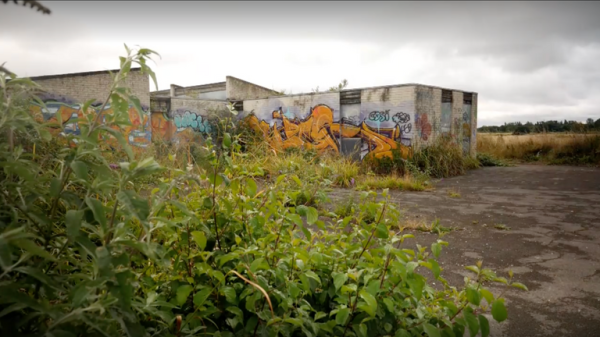
Over a decade ago, Warren Farm was abandoned – what was a sports centre fell into disrepair and soon, nature took over.
Now, it is home to a quarter of London’s skylarks, as well as kestrels, owls, linnets, slow worms, and plants that are on the UK’s extinction list.
Amateur photographer Julian Oliver spends his time on the rewilded land, snapping wildlife. He recently found a type of running crab spider, or thanatus striatus, which was a new addition to the reserve’s known ecosystem.
He said: “I’m here so often, recording what I find for the nature reserve. I go around finding as many insects and spiders as I possibly can, photograph them and then have a go at identifying them. And every now and again, something turns up that you know shouldn’t be here or is a rarity and that makes it really exciting.”
Now, the council is in a battle with local campaigners who want the land preserved.
The council wants it back, to build a new community sports centre for the people of Southall. The local campaigners want the land preserved as a nature reserve, to protect the delicate ecosystem that has sprung up.
Councillor Peter Mason is the leader of Ealing Council and said: “What we’re trying to do is provide sports facilities that are incredibly important to young people in Southall and Hanwell and beyond.
“This is a community with the highest levels of hypertension, diabetes and heart disease, some of the lowest levels of physical activity. And we want to make sure that the kids of Southall have got places to place cricket and sport in the future.”


After years of conflict, the council has come up with a fairly controversial compromise. They will take part of the rewilded site back for sports pitches and buildings and designate the rest as a nature reserve.
Campaigner Katie Boyles says this is not an option: “We’re not against sports by any stretch. Sports are really important, but what we are saying is you can’t destroy valuable habitats like [Warren Farm].
“You cannot ‘dewild’ over half of the site because that will ultimately destroy the whole of the site. That’s not a compromise. We think that is not a win-win, as they like to call it. It’s actually a lose-lose.”

This rewilded land is part of a growing tension.
The government has pledged to protect 30% of the land by 2030 in a bid to boost the UK’s biodiversity and will also need to support new buildings like homes and community spaces. But construction and biodiversity rarely go hand in hand.

From heavy vehicles compacting soil, to cutting down long grasses and knotty thickets that provide habitats for wildlife, the impacts are vast.
Dr Alex Opoku is an expert in construction and biodiversity at UCL and the University of Sharjah. Although he says the best way to protect ecosystems like Warren Farm’s is to not build at all, there are ways to mitigate the impacts.
Spreaker This content is provided by Spreaker, which may be using cookies and other technologies. To show you this content, we need your permission to use cookies. You can use the buttons below to amend your preferences to enable Spreaker cookies or to allow those cookies just once. You can change your settings at any time via the Privacy Options. Unfortunately we have been unable to verify if you have consented to Spreaker cookies. To view this content you can use the button below to allow Spreaker cookies for this session only. Enable Cookies Allow Cookies Once
Click to subscribe to ClimateCast with Tom Heap wherever you get your podcast
He said: “It’s clear that construction has got a negative impact on the environment, there’s no doubt about that. But construction and biodiversity can coexist, because we can construct green roofs, green walls, we can create green spaces within these construction activities.
“We need to plan carefully to make sure that we can reduce the negative impact of the construction activities on biodiversity or on the environment in general.”
As the UK tries to build back its wildlife, construction projects like this will need to learn how to coexist with nature.
